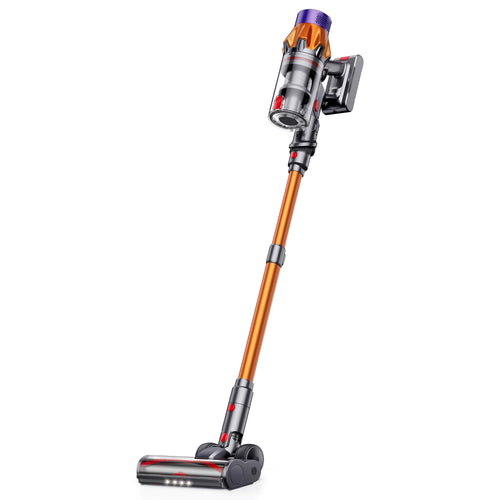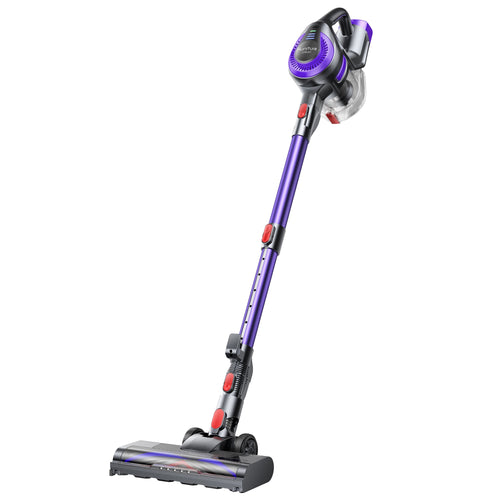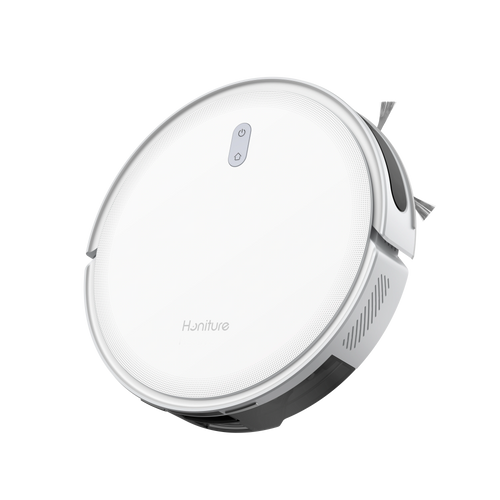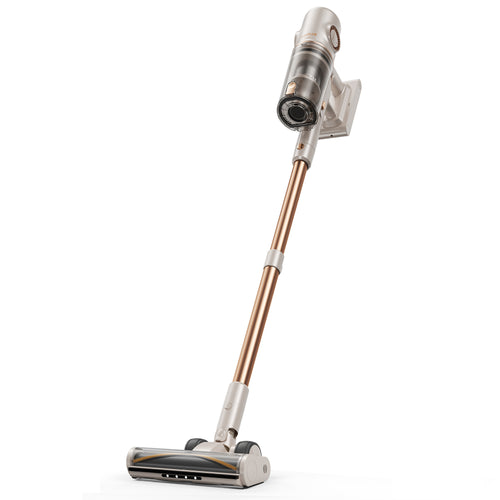Today, cordless vacuum cleaners have become the workhorse of modern families. However, faced with a wide range of models on the market, consumers often fall into a common dilemma: Which parameter of a cordless vacuum cleaner is more worthy of attention, the power or the suction? Does simply pursuing high power mean stronger cleaning ability? This article will analyze the essential differences and intrinsic connections between power and suction from a professional perspective, and provide a detailed buying guide to help you make an informed decision and choose the cordless vacuum cleaner that is truly right for you.
Cleaning ability refers to more than just the suction power of a vacuum cleaner, although suction power is an important part of vacuum cleaner performance. With some information and knowledge, you will be able to carefully study these numbers and better understand what these specifications mean and which ones are important to you.

Power and suction: Understand the core concept
Before understanding the importance of the two, we first need to have a clear and professional understanding of these two key indicators.
What is vacuum cleaner power?
In the field of cordless vacuum cleaners, power usually refers to the input power of the motor, which is measured in watts (W). It represents the electrical energy that the vacuum cleaner motor obtains and consumes from the power supply per unit time. From an engineering perspective, power reflects the potential energy conversion ability of the motor.
However, it is important to note that high power does not directly equate to high suction. The motor converts electrical energy into mechanical energy (driving the fan to rotate), and then generates negative pressure through the air duct, which ultimately forms suction. There is energy loss in this conversion process, and the effective suction generated in the end may not be ideal.
Vacuum cleaner suction power?
Suction force, also known as suction power or air power (Air Watts, AW), is the gold standard for measuring the actual cleaning performance of a vacuum cleaner. This is because it more accurately reflects the vacuum cleaner's ability to suck in air and dust, and is a composite indicator that takes into account both vacuum degree and airflow. Common suction force units include: Pa or kPa
- Robot vacuum cleaner: Pa is commonly used, such as honiture v8 pro and other models.
- Cordless vacuum cleaner: AW or Pa is suitable for lightweight pulling. , such as honiture p7 pro and other models
These are units of pressure that indicate the maximum vacuum a vacuum cleaner can create when in operation. A higher vacuum means that the vacuum cleaner can theoretically "lift" a higher column of air, giving it a stronger "attraction" to particles clinging to surfaces.
The deep relationship between power and suction: the embodiment of efficiency
Power is the "input" and suction is the "output". The relationship between the two is determined by the overall efficiency of the vacuum cleaner. A good cordless vacuum cleaner, even if its input power is not the highest on the market, can efficiently convert limited electrical energy into strong suction by optimizing motor efficiency, air duct design, sealing, and suction head structure.
Therefore, from the perspective of actual user experience and cleaning effect, suction is a far more important indicator than power.
Why is suction more important than power?
Now that we have the definition, let’s dive into why we should put suction power first when choosing a cordless vacuum cleaner.
- Directly reflects the cleaning efficiency: Suction directly determines whether the vacuum cleaner can effectively remove dirt of different sizes, weights and adhesion. Fine dust, hair, grain particles, strong suction can ensure that they are quickly sucked in.
- Adaptability and versatility: High suction means that the vacuum cleaner can better cope with various cleaning scenarios. Whether it is cleaning floors, short-pile carpets, long-pile carpets, or cleaning sofas, curtains, and car interiors, strong suction can provide sufficient protection.
- Save time and energy: Vacuum cleaners with strong suction usually only need one or two back and forth to achieve the ideal cleaning effect, which greatly shortens the cleaning time and reduces the labor intensity of users.
- Optimize energy utilization: Excellent design will enable the vacuum cleaner to achieve higher suction with lower power consumption, which means longer battery life and more energy saving and environmental protection.

How to choose the right cordless vacuum cleaner for you? Professional purchasing guide
Now that you understand the importance of suction, we will provide you with a detailed guide to help you make the best choice among many products.
Identify your core cleaning needs
Living area and apartment type:
- Small apartment/single apartment: 30-45 minutes of battery life and 100-150AW suction power can meet daily cleaning needs.
- Medium-sized to large apartment (three bedrooms or more): 45-60 minutes of battery life or longer. It is recommended to choose a suction power of 150AW or more to cope with a wider cleaning range and potential stubborn stains.
Cleaning scenes and floor types:
- Hard floor (wooden floor, tile): Suction of about 15kPa (15000Pa) is usually sufficient. More attention should be paid to the design of the main suction head, such as soft velvet roller brush, which can effectively protect the floor while absorbing fine dust.
- Short-pile carpet/mixed floor: It is recommended to choose a suction of more than 20kPa (20000Pa), with a main suction head with a strong floor brush or V-shaped roller brush to better remove dust and hair between carpet fibers.
- Long-pile carpet/multi-pet household: It is strongly recommended to choose a flagship suction product with more than 25kPa (25000Pa) or even 30kPa (30000Pa), and match it with a high-torque electric floor brush or anti-entanglement roller brush to cope with large amounts of hair and deep cleaning needs.
Family members:
- Children or pets: In addition to high suction power, you should also pay attention to the main suction head with anti-hair entanglement design (such as conical anti-entanglement roller brush, automatic hair cutting design), and efficient filtration system (HEPA) to reduce allergens.
- People with allergies: Be sure to choose a product with high overall filtration efficiency (such as claiming to be above 99.9%) and good sealing, equipped with multi-stage cyclone separation and washable HEPA filter.
Core performance parameter priority: suction power > battery life > filtration > accessories > weight
- Suction force (Pa/kPa value): Prioritize the maximum vacuum degree Pa or kPa value. This is a key indicator to measure cleaning ability. At the same price, the higher the value, the better the cleaning effect.
- Battery life: The battery life in standard mode is more valuable for reference. Some products are marked with the longest battery life in "energy-saving mode", while the battery life in high suction mode will be significantly shortened.
- Filter system: An excellent filtration system can effectively lock dust and avoid secondary pollution. Multi-stage cyclone separation + high-efficiency HEPA filter is the mainstream configuration. Make sure the HEPA filter is detachable and washable for easy maintenance.
Suction head and accessories: A rich variety of suction head accessories can expand the use scenarios of vacuum cleaners.
- Main floor brush: Different optimized designs for hard floors and carpets.
- Electric floor brush with independent motor drive, stronger cleaning power.
- Crevice suction head: Clean narrow gaps and corners.
- Two-in-one brush head: Clean desktops, keyboards, etc.
- Electric mite removal brush: Especially important for families with mite removal needs.
- Hoses, extension rods, etc.: Convenient for cleaning high or low spaces.

Additional considerations:
- Charging time: The shorter the charging time, the better. Some products support fast charging.
- Dust collection method and capacity: The dust bagless design is more environmentally friendly and convenient, and the moderate capacity of the dust cup can reduce the number of dumping.
- Display and intelligent functions: Some products are equipped with OLED display screens, which display the power, mode, fault prompts, etc. in real time, which is more user-friendly.
- Brand and after-sales service: Honiture brand, with reliable product quality, more complete after-sales service and more professional maintenance guarantee.
In conclusion
In the world of cordless vacuum cleaners, suction power is the hard-core indicator that determines its cleaning ability, which is far more valuable than the simple power figure. Power is only energy input, while suction power (especially Pa/kPa value) is the embodiment of effective energy utilization.
When purchasing, please jump out of the misunderstanding that "the greater the power, the better", focus on the actual suction power (Pa/kPa value), and combine your living environment, cleaning habits, floor type and other personalized needs, and comprehensively consider factors such as battery life, filtration system, suction head accessories, weight and brand after-sales.
FAQ
1.What is the difference between the suction power units of Pa, kPa and AW for cordless vacuum cleaners? Which one should I look at?
Pa (Pascal) and kPa (Kilopascal) are units of pressure used to indicate the maximum vacuum a vacuum cleaner can produce. The higher the value, the greater the vacuum, and theoretically the stronger the “suction” ability. However, AW (Air Watts/Aerial Watts) is a more comprehensive indicator that takes into account both the vacuum (pressure) and the air flow. In simple terms, a high vacuum plus sufficient air flow will effectively suck away dust.
If the brand provides both AW values, give priority to the AW value, because it can more truly reflect the cleaning efficiency of the vacuum cleaner. If only Pa or kPa is provided, for products with similar values, you can make a judgment based on actual evaluations and user feedback.
2.Is the "maximum battery life" advertised by cordless vacuum cleaners reliable? Why does it feel shorter when I use it?
In actual household cleaning, we often switch between medium and high positions and frequently use electric floor brushes, which will greatly increase power consumption. Therefore, the actual usage time will be much shorter than the advertised maximum battery life.
3.I have pets at home. What else should I pay attention to when choosing a cordless vacuum cleaner besides suction power?
For households with pets, in addition to strong suction power (recommended 20kPa/180AW or above) to suck away a lot of pet hair, the following points are also crucial:
- Anti-entanglement main suction head: The main suction head with a conical roller brush, V-shaped roller brush or automatic hair cutting design can effectively avoid hair entanglement and reduce the trouble of cleaning the roller brush.
- High-efficiency filtration system: Pet hair and dander are common allergens. Choosing a vacuum cleaner with multi-stage cyclone separation and washable HEPA filter can effectively filter fine particles and avoid secondary pollution.
- Electric mite removal brush: If pets move on sofas and beds, equipping them with electric mite removal brushes can more effectively clean these areas and remove mites and allergens.
- Easy-to-clean dust cup: Pets have a large amount of hair, so it is more convenient to choose a dust cup with moderate capacity and one-button dumping.
4.Is it necessary to choose a cordless vacuum cleaner with a smart display?
The display can improve the user experience. It can display information such as the remaining power, current suction mode, filter cleaning reminder, and blockage alarm in real time. This allows you to see the working status of the vacuum cleaner at a glance, find problems in time and perform maintenance, and avoid the embarrassment of running out of power in the middle of cleaning.

































